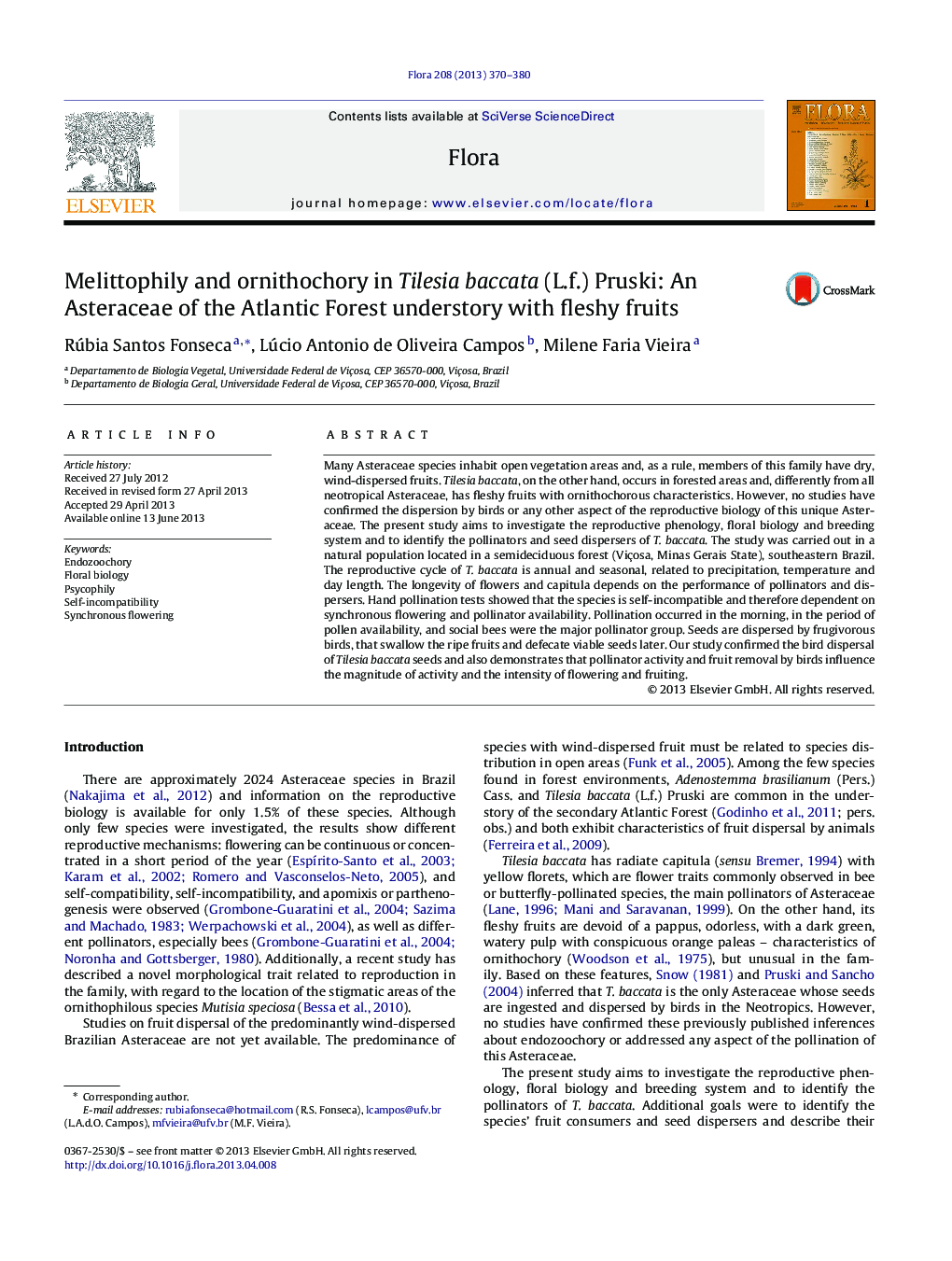| Article ID | Journal | Published Year | Pages | File Type |
|---|---|---|---|---|
| 2179714 | Flora - Morphology, Distribution, Functional Ecology of Plants | 2013 | 11 Pages |
Many Asteraceae species inhabit open vegetation areas and, as a rule, members of this family have dry, wind-dispersed fruits. Tilesia baccata, on the other hand, occurs in forested areas and, differently from all neotropical Asteraceae, has fleshy fruits with ornithochorous characteristics. However, no studies have confirmed the dispersion by birds or any other aspect of the reproductive biology of this unique Asteraceae. The present study aims to investigate the reproductive phenology, floral biology and breeding system and to identify the pollinators and seed dispersers of T. baccata. The study was carried out in a natural population located in a semideciduous forest (Viçosa, Minas Gerais State), southeastern Brazil. The reproductive cycle of T. baccata is annual and seasonal, related to precipitation, temperature and day length. The longevity of flowers and capitula depends on the performance of pollinators and dispersers. Hand pollination tests showed that the species is self-incompatible and therefore dependent on synchronous flowering and pollinator availability. Pollination occurred in the morning, in the period of pollen availability, and social bees were the major pollinator group. Seeds are dispersed by frugivorous birds, that swallow the ripe fruits and defecate viable seeds later. Our study confirmed the bird dispersal of Tilesia baccata seeds and also demonstrates that pollinator activity and fruit removal by birds influence the magnitude of activity and the intensity of flowering and fruiting.
